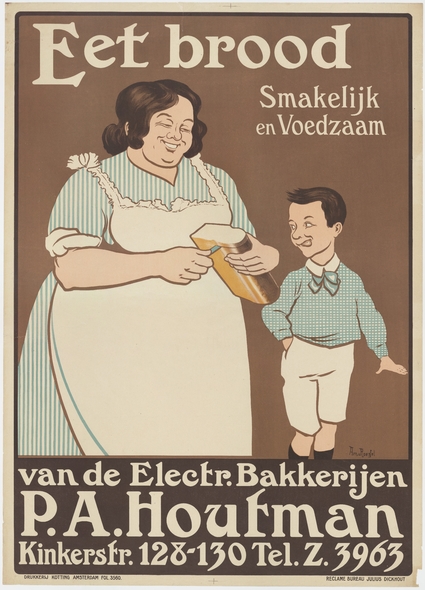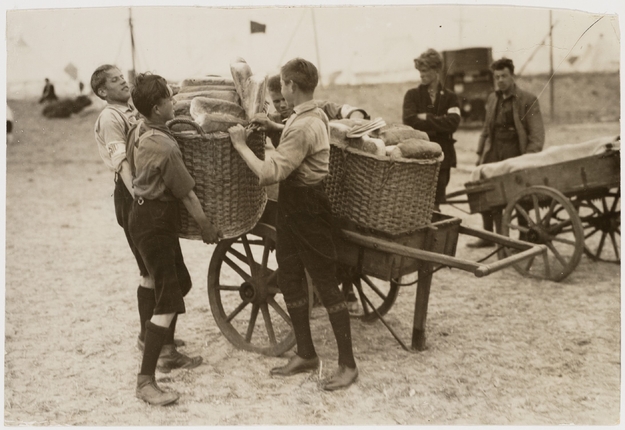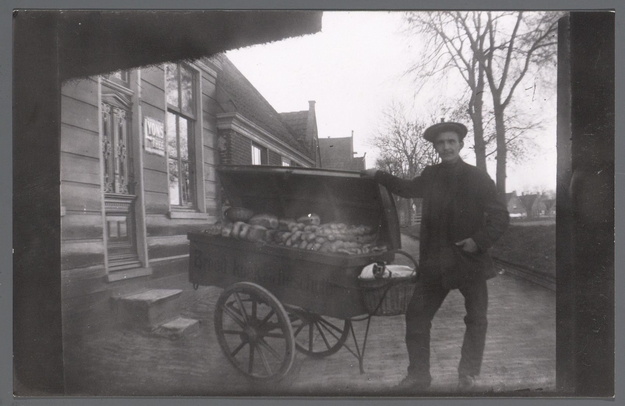Life near the Port of Amsterdam was not only scented by colonial activities. Afterall, a huge portion of businesses ran by the docks were also to sustain a whole city of people. Having said that, the aromas by the water, much like today, also came from the everyday life of the Amsterdammer. And what is more mundane yet inextricably embedded into the Dutch lifestyle than bread. It is a staple food in the Dutch diet today as it was in past. In fact, it also became a mainstay food in the New World, in that the processes and recipes remained unaltered. But it is more than just a supplement. Freshly baked bread has an incredibly tantalising scent; it’s the one that makes our mouths water and our stomach grumble. It is one of the strongest triggers for memories relating to childhood and home. And it would have been an odour equally tempting in the early modern period in Amsterdam.
Bread has four basic ingredients: grain, salt, leavening and water. The first two ingredients being at the heart of, arguably, the most important trades for the Netherlands (Tielhof, 2002). The grain trade is now nicknamed the “Mother of all Trade” by scholars. Most of the grains used for baking bread in the whole of The Republic of the 7 Provinces was imported from the Baltics: this was mostly rye, wheat and a lesser portion of barley (Janowitz, 1993). These huge quantities of grain, nowadays deemed as bulk trades, ought to sustain the bread consumption of about at least half a million citizens. Not to mention that these number should be contextualised as such: a poor family with two young children would have consumed approximately 5 pounds of rye bread a day. And the rich, would have preferred white bread (i.e. using finely sifted wheat) instead but would have consumed no lesser in amount than a less-to-do household. By the first half of the seventeenth century, about 120,000 tons of grain were brought to Amsterdam from the Baltics, to supply both the locals and to be exported to other towns and even countries (Rose, 2009).
But the process of turning grains to bread starts with the bakers purchasing grains from the grain trade who stored the goods in his attic. The grains then had to be sent to a mill for grounding, which is paid by the baker as per government-instated fees (Rose, 2009). This is then transported to the bakeries; there the flour is used to make an assortment of breads. Dutch still life paintings appear to be the best evidence of the range of assortment: from size, shape, type, flavour incorporated. For the wealthier classes living within the canal rings (i.e. Herengracht, Keizergracht, Prinsengracht) would have been perfumed with smell of white bread, pretzels, and “sweetmeats” which are sweet bread flavoured by spices and dried fruits.
In all, although the smell of grains brought in by the cargoes would not have been a chief aroma, it is one of the important subtleties in the Amsterdam port’s smellscape. We think of it of a lingering note playing a supporting role amongst all the odoriferous characters; yet, the malty aroma signifies an important economic trade that arguably propelled the flourish of the 17th century.


